September 7, 2019 was the NUT100K, a 64 mile ultramarathon with 11,000 feet of elevation gain and 7000 feet of elevation loss. I attempted the race with very little training and with an existing injury. I did not finish (DNF’d), ending my attempt at mile 30. It was a bad time at a great race.

The NUT100k is put on by Go Beyond Racing, who organize some of the best running races in Oregon. I’ve volunteered at a few of their events and have always had a great time. The race directors are serious about limiting the environmental impact of their events, and are incredibly thorough in their planning – I can’t speak highly enough about them, and if you’re given an opportunity, race or volunteer at one of their events. You won’t be disappointed!
I’m going to jump right into the race recap. It’s tough to write about a race that didn’t go well, but it’s also kind of cathartic. After the recap, I’ll provide some background and talk about what went wrong and how I can do better in the future.
The night before the race, I drove from Bend to the race finish at Lemolo Lake. I found a primitive campsite on a logging road near the lake and crawled into the back of my SUV, ate dinner, and set my alarm for 2a. At around 8p, my teammate Stacey stopped by the campsite to wish me luck – Stacey would be sweeping the race from mile 30 to the finish, so I’d see her at Aid Station 4 around noon. Stacey volunteers for many of the Go Beyond events, and her positivity is infectious.
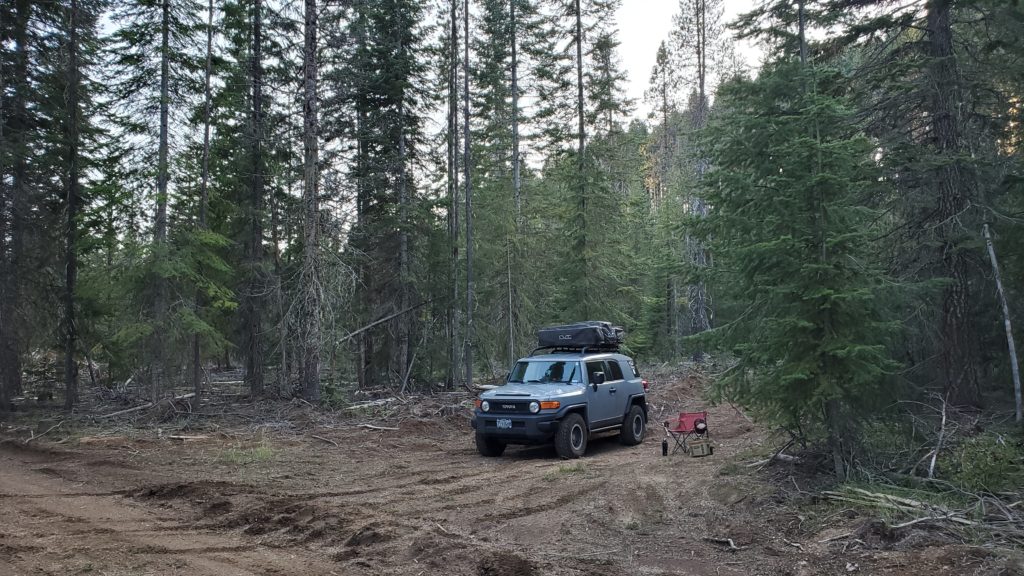
By 9p, I was asleep in my slightly cramped but cozy bed.
My alarm went off at 2a, I got dressed, and drove to the finish to catch the shuttle bus to the start line. The bus ride was great; I spent the hour-long journey chatting with a few other runners and was reminded why I love the ultra-running community so much. One of the runners was the humble yet confident Drew Roberts, who was gunning for the win and had a target time of 11 hours.
Hot coffee awaited us at the start line, and the 70-some runners queued up for bibs and porta-potty visits. I was naively confident in my very conservative pace goals and chatted with a few other runners as we waited for the final announcements and the starting whistle.
Race Start to Aid 1.
The race started at 6:04a, and I found a comfortable pace early on. I stuck with a group for the initial flat section and appreciated the headlamps around me. The trail was surprisingly technical with some big roots that were hard to see. On the first significant climb, I got ahead of the group and was on my own until the next descent when I got caught by a couple of dudes from Portland that I’d chatted with on the bus. We ran together to the first aid station at mile 8 where a friend, Rhiannon, was volunteering. A big hug, a handful of Fig Newtons, and a quarter of a PB&J were all I took from Aid 1, but I got dropped by the group while munching my Newtons. I figured I’d catch them on the next climb but that didn’t happen.
Aid 1 to Aid 2
Around mile 9, my left hip started hurting. It wasn’t bad but I knew it was there.
Guess I should make a note here. Last April, I broke my femur in a crash during a bike race. This required intramedullary femoral nailing – basically, surgery to put a titanium rod inside of my femur with two screws up near my hip and two screws near my knee to hold it in place.
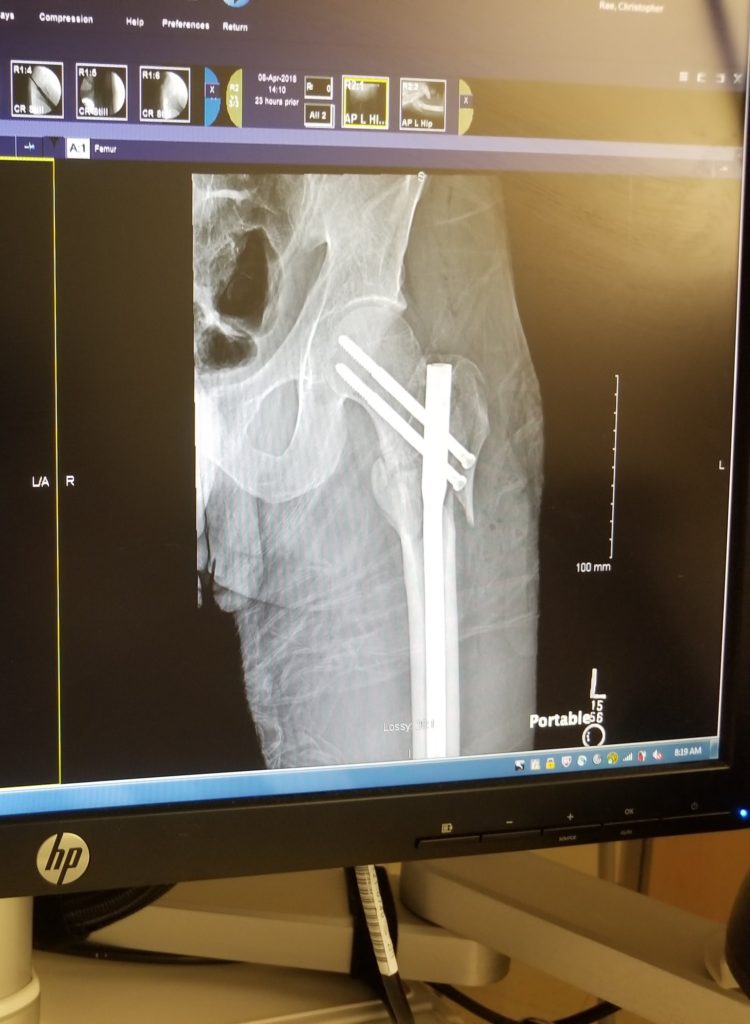
It sucked. But what STILL sucks is that the topmost screw protrudes a bit further than is ideal, and my IT band rubs against it. It doesn’t hurt while cycling and usually doesn’t hurt while running, except on long descents. I expected it to cause some problems during this race, but since the course was primarily uphill and the descents weren’t that steep, I figured I’d be able to walk the descents, if necessary, and make up time on the climbs. Boy was I wrong.
I went from a 14 minute per mile average pace in the first 10 miles to an 18 minute per mile pace. I made it to the aid station at mile 15.8 thinking I could power-hike the rest of the way to aid 4 and still make the cutoff at 1:30p with plenty of time to spare. The next aid station was at mile 21.3 and so I charged on.
Aid 2 to Aid 3
I still felt confident after aid 2 that I could make it to aid 4 by 1:30p and eventually finish the race. My pace was still pretty consistently around 18 minutes per mile (a light jog/fast hike), and since I’d started out strong I thought I’d average the necessary 15 minute miles to get there in time. This section was relatively flat so I thought I’d pick up some speed and get ahead of the curve.
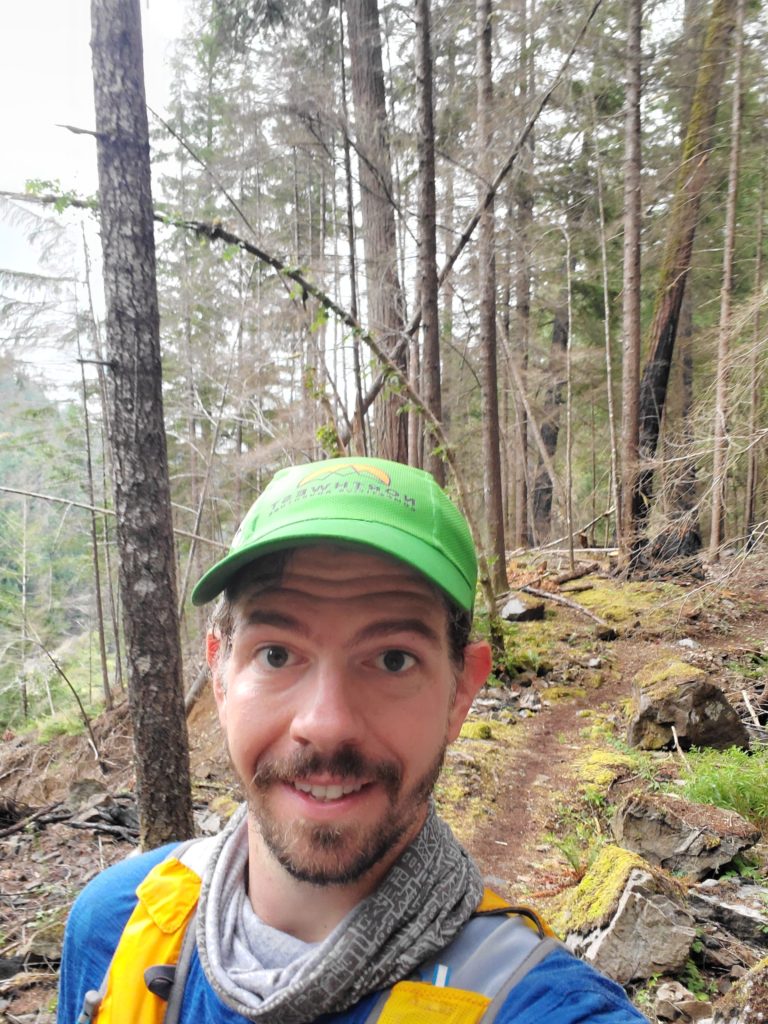
On my way into aid 3, another runner caught up to me and asked if I was okay. He said I was limping pretty badly and it was very obvious. We ran together for a few miles and his positive energy was exactly what I needed to get through that stretch of trail. I’m invigorated by others, and I love sharing experiences, so it helps a ton to meet new people out there and have someone to chat with. When he finally took off on his own, I made it a goal to catch him at the next aid station and tried to pick up the pace a bit.
I missed him by a few minutes, but ran into the aid station with a pair of younger guys who were pretty stoked. I chatted with the medic and volunteers at aid 3 about my leg, grabbed a handful of gels and some Fig Newtons, and took off ahead of the stoked dudes.
Aid 3 to Aid 4
In hindsight, I shouldn’t have left aid 3. I know that now, but the conversations at the aid station and the fairly flat section of trail between aid 2 and 3 had me feeling pretty confident.
The two stoked guys passed me and I tried to stay on their heels. I kept catching them on the climbs and losing them on the descents. It was disheartening to bomb up hills feeling great only to be in searing pain every third step on the descent. I started picturing the tendon and muscle in my leg as ground hamburger meat and found myself in a dark place.
I’d been passed by most of the field by mile 25, and most of the runners were encouraging and still stoked to be out there despite being near the back of the pack. But as I found myself nearer to the last runners out there, attitudes got increasingly negative and it took its toll on me. At this point, I realized I’d be hard pressed to make the cutoff as the descents got steeper and my pace got slower overall. By mile 25 I was hiking 20 minute miles and it was nearing noon.
Chasing a cutoff is a really stressful situation. I can’t say I’ve ever had that experience before, and it was humbling. Realizing that I was quite literally at the tail end of the race was disheartening. I thought about stopping and letting the clock run out so that I wouldn’t even have the option of continuing after aid 4.
To make matters worse, I’d unconsciously been underpronating to alleviate some of the strain on my IT band, and as a result started developing a painful hot spot on the outside of my left foot. Runners passing me were struggling on the climbs more than I was, so I’d get stuck in traffic on the uphills but passing was impractical because they were twice as fast as I was on the following descents.
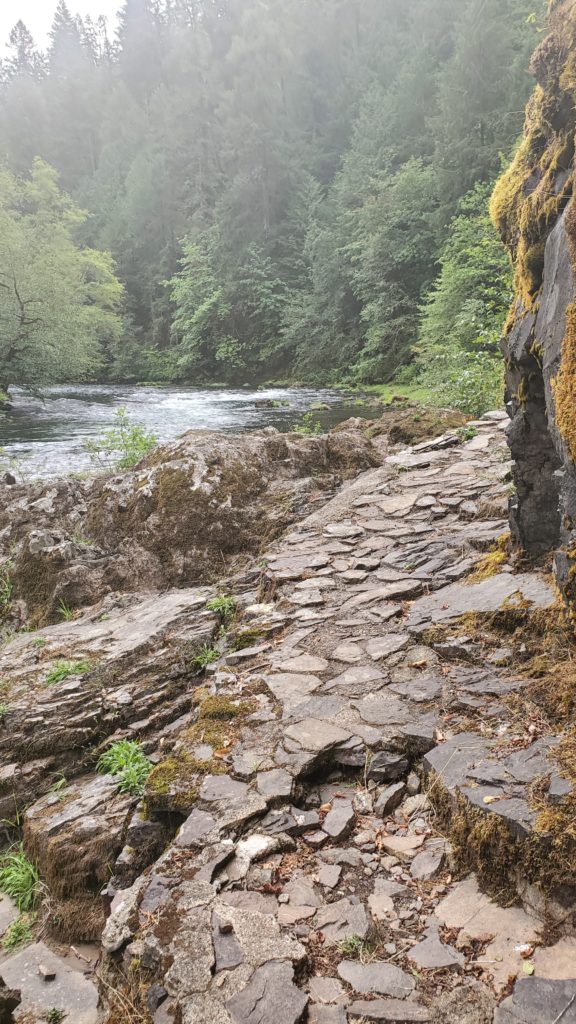
On the last climb before the aid, I passed the two younger stoked dudes and then descended into the aid station with four minutes to spare before the cutoff. My friend & teammate Stacey was there waiting, and after a great big hug I told her that I wasn’t going to be able to go on. She was super encouraging and I was glad to see her still there – I really needed her positivity in that moment.
I sat at the aid station until it shut down, chatting with the medic and one of the organizers for Go Beyond Racing. A volunteer gave me a ride back to the finish line so I could get some food and my drop bag, and I sat for a while watching the 50K finishers come in. The race directors were there with high fives for every finisher and they were stoked to see me, asking about my wife and daughter and if I’d ridden my bike to the race as I’d originally planned (I hadn’t, and was very glad I didn’t have to hop back on the bike after the DNF!).
So what went wrong? Here’s some background:
I registered for the NUT100K back in February. At the time, I was pretty stoked to be getting back into ultra-running. I’d had a freaking BLAST pacing Helgi Olafson at Moab240 a few months prior, and I expected to have plenty of time to train leading up to the race. Unfortunately, my race calendar became increasingly packed, with Iberica Traversa taking up most of April (and the subsequent recovery from riding 1200 miles in 9 days taking most of May).
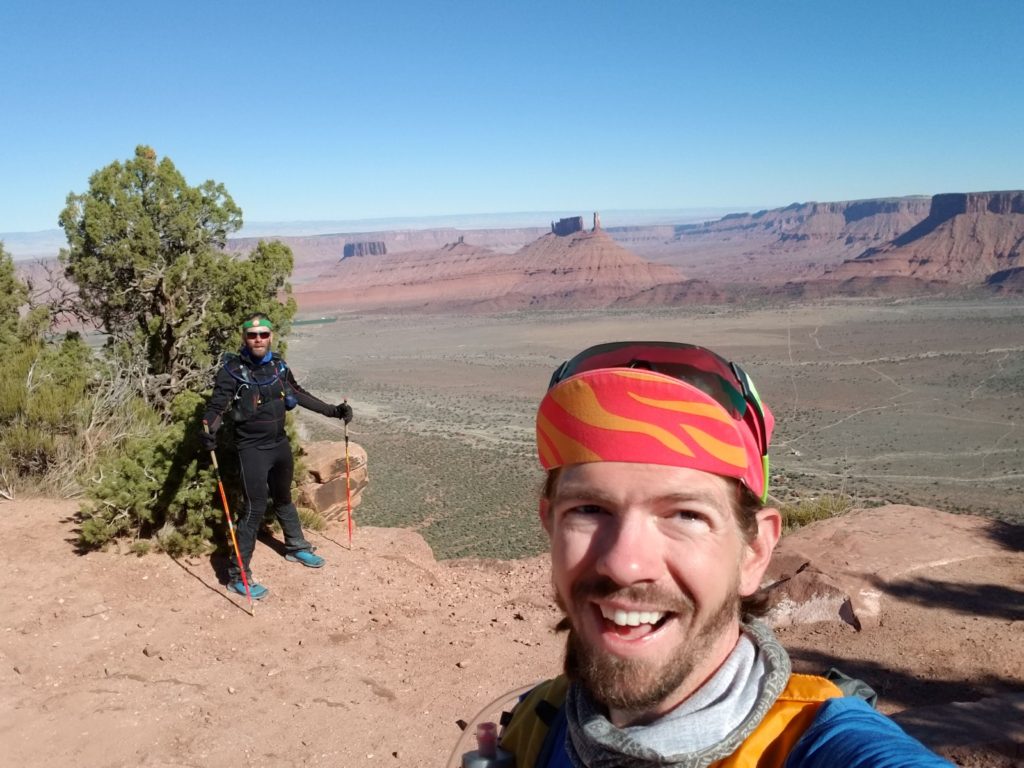
June was spent road racing on the bike, with two strong finishes at the Oregon Gran Fondo (2nd place) and Best of Both (4th place). By the end of June, I figured I’d be able to transition from cycling to running and still have 10 weeks to train. A progressive distance training program with a little speedwork and a taper week would get me to a finish — albeit not a competitive finish, but still to the line.
On June 28th, my wife had our daughter, Amelia. I went from having 20+ hours/week of training to 6. Two weeks after Amelia was born, I decided to race a 24-hour endurance mountain bike race. Several teammates were racing or supporting the event, and I was in great cycling shape. Unfortunately, that race didn’t go well, and only 4 hours into the event, I crashed and injured my knee. This made running painful, and by the beginning of August I realized that I’d run fewer than 100 miles in 2019. Oof.
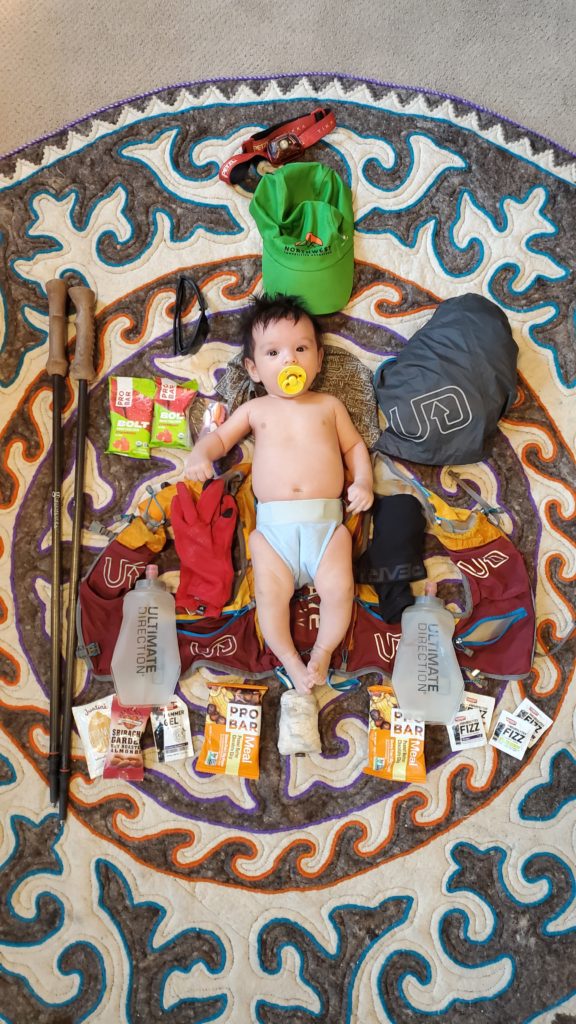
So with four weeks of training left before the NUT100k, what did I do?
I hid. I didn’t run much at all. 4-6 miles per week and mostly at tempo. I didn’t want to prove to myself how untrained I was, so I didn’t run enough to even test my leg at distance. I expected my cardio base to carry me through the race and didn’t consider the possibility of my leg causing me pain until just a few days before the race.
I considered a DNS (did not start) for the week leading up to the event, but ultimately decided to race, knowing that there was a possibility I’d have to drop. I’m glad that I attempted the race, but I recognize that the DNF and the injury is my own fault.
I’m struggling, post-race, with reconciling the fact that I probably won’t run another ultramarathon for a long time. Ultracycling has become my primary sport, and training for unsupported ultra-distance bike races means very little time to train for ultra-distance running races.
But that’s okay. Running is my first love, and I want to continue running. I want to continue to LOVE running, so I’ll do it as cross-training and I’ll do it socially. I may run another ultra in the future, but for now I’m going to focus on competitive cycling and recreational running. I’ll volunteer at running races to get my fix on the community, and I’ll pace for friends when they compete, but for now, I’m retiring from my favorite sport.
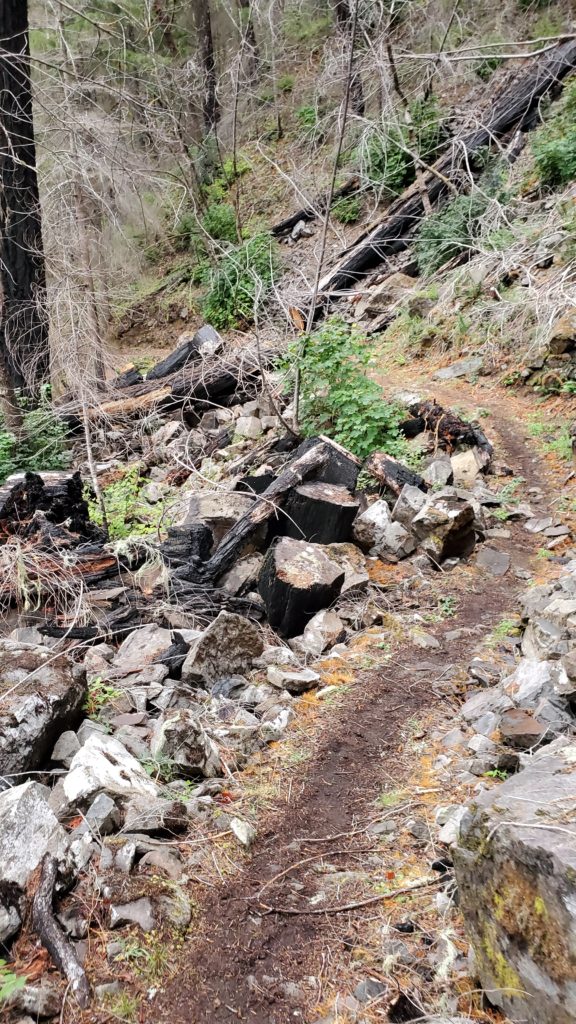
Hey, there’s no shame in retiring or taking a hiatus. We’re not really in control of these things you know? Totally sucks I’m sure, but you’ve done your best. And you still have a lot of competitive outlets.
It was also really interesting the way you talked about your fellow racers’ attitudes and the way that affected your own mental space. It sounds so ENFJ 🙂 I have no idea if my response would be similar or not.
Hope the pain fades quickly and you can get back on your feet.
Thanks Joe!
I love that you were interested in my response to others’ attitudes; it’s a blessing and a curse! My flame is often stoked or extinguished by the positivity/negativity of those around me, and while I absolutely love the community that participates in races like this, I’m far better off on my own than surrounded by others. Otherwise my rhythm gets thrown off and I don’t really race my own race. It’s something I have to keep in mind when I’m challenging myself, and a reason I tend to prefer competing in unsupported, solo events.
I’d be interested in seeing what your response would be to the same situation!
Great writeup, Jesse. Sucks that the race hurt so badly, but sounds like you’ve got some clarity moving forward. PLUS, mtb is wayyy more fun than running anyway 😉
Being a mostly runner and occasional biker for years, it always surprised me how DIFFERENT muscles get sore from running and biking! Jesse, I HIGHLY recommend you try Nike Vapor fly 4% ( the newest version too ) They have a carbon fiber plate ( very light, returns energy ,coupled with Nike’s most resilient foam.) I have not had knee or hip pain using these incredible shoes, and believe me I have tried just about all the latest technology. Mostly a road shoe though. 😁
Thanks Tim! I’ll take a look at the Vapor Fly. I’ve been happy with my shoe selection for a few years (Inov8 x-Talon for training and short races, La Sportiva Akyra for mountain running and racing) but I’m always open to new ideas.
Sobering read Jesse; thanks for sharing this. Disappointing finishes suck, and DNFs suck even more, but your resiliency shines through in this writeup as you’re able to reflect on the race itself, the training, and takeaways for next time. The beauty of these kinds of races is that there’s always a next time. Good luck with your next time!
thanks for the kind words, Ben! hoping that next time happens post-screw-removal for the sake of my sanity!
Man I loved reading this, and hearing your heart through it all. I am sure we will connect again soon, it would be awesome to meet your wife and child. Keep after it Jesse, you are amazing!
Drew
Thanks, Drew! Your humble confidence and positivity before the race was a highlight of my experience.
Ultra-endurance parenting is my latest sport, and the one I hope comes most naturally. Let’s connect sometime this fall and get our families together!